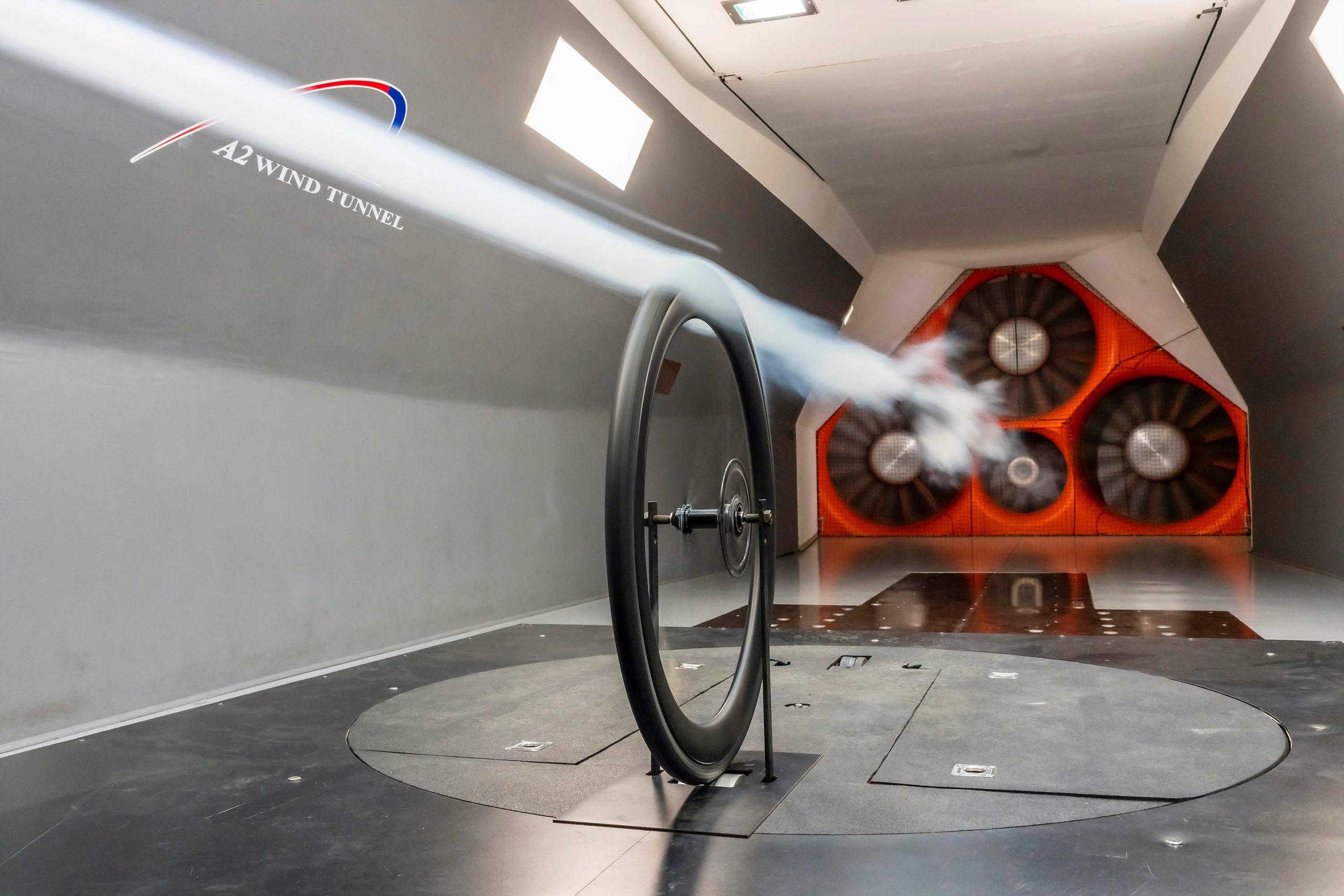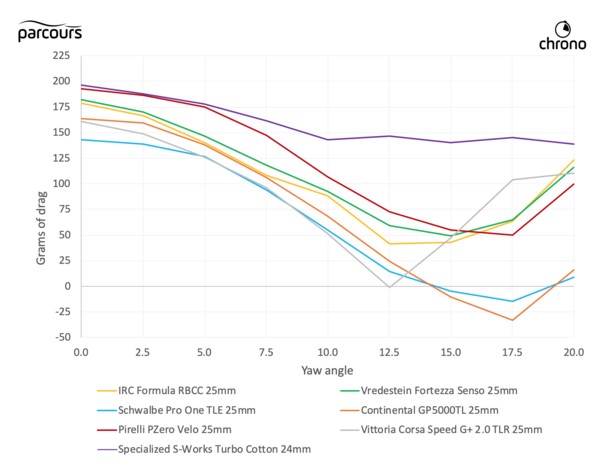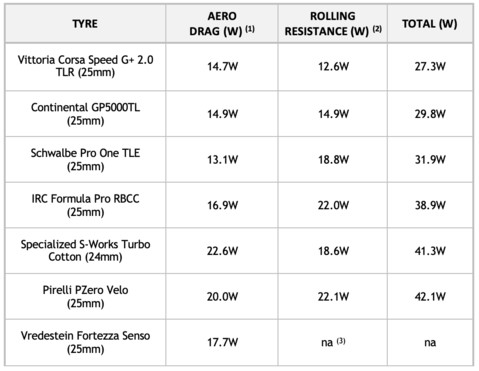Choosing the right tyres could be the difference between first and second, getting a PB or getting a puncture on your ride. Deciding on which rubber to go for is tricky with all the choice, the wild claims and fancy marketing, how do you know which tyres are the fastest? We spoke (pun intended) to wheel designers/manufacturers Parcours who have all the gear and all the idea!

When riding your bike, the power you put through the pedals needs to overcome a number of forces. Two of the main such forces are aerodynamic drag and rolling resistance. (If you’re riding uphill, you also need to overcome gravity and there will be a small loss through non-perfect drivetrain efficiency, but these aren’t considered here). As a business, Parcours has always looked to reduce drag through our range of wind tunnel-tested aero wheels.
Whilst the primary focus of our wind tunnel testing programme is the wheel itself, it has become increasingly apparent that the choice of tyre can have a significant impact on overall aerodynamics. The fastest wheel in the world can lose a large chunk of its aero benefits when paired with a poorly-performing tyre. This makes complete sense given the tyre is the first part of the wheel setup that breaks through the air, whilst modern rim design is also focused on recapturing this disrupted airflow as quickly and efficiently as possible.
However, the most aerodynamic tyre still needs to roll efficiently. Rolling resistance is the quantity of power output that is lost through the interaction between the tyre and the road surface as the wheel rolls along. A tyre’s rolling resistance will be determined by various factors, including tyre width, inflation pressure, construction type and rubber compound used.
As tyre manufacturers have moved to offering tubeless options across their line-ups, we wanted to take a look at the combination of aerodynamics and rolling resistance to see if we could determine which tyre come out on top in the rankings.
Aerodynamic comparison

The first step was to run each tyre through our standard wind tunnel test protocol. Each tyre was fitted to exactly the same Parcours Chrono (77mm) front wheel and tested at the A2 Wind Tunnel in North Carolina. Wheels were tested standalone, across a range of yaw angles from 0 to 20 degrees. All tyres were inflated to a standardised 100psi (consistent with previous testing). The lower the drag line on the chart, the more aerodynamic the tyre is.
One of the most interesting observations was that most of the older model tyres would inflate to 10-12% wider than their stated width, when fitted to our Chrono front wheel with its 20mm internal rim width. However, the newer 2019 tyres would only increase by < 5% versus stated width. As a result of this, it was no surprise to see that the newer tyres (broadly speaking) came out on top.
Overall ranking

We then combined the weighted average aerodynamic drag (as tested above) with the rolling resistance (as tested by Bicycle Rolling Resistance) to give an overall performance figure for each tyre.
Notes:
1) Aero drag shown at 30mph
2) Rolling resistance is shown at 100psi, adjusted to 30mph
3) Rolling resistance data is unavailable for Vredestein Fortezza Senso tyre
These results clearly show that whilst reducing rolling resistance has been the headline goal for tyre manufacturers when releasing new models, aerodynamics have also not been dismissed. In fact, the three highest-performing tyres were all released in the past 12 months.
There are a couple of additional points to note:
- In order to maintain consistency with previous tests, all data shown is at 100psi. However, when using rolling resistance figures at a more-realistic 80psi (as per our recommended inflation levels for a 25mm tyre on the Chrono front wheel) does not impact the rankings above. The overall deficit to the leading tyre is however reduced in each case by between 5 & 15%
- Tyres included were based on availability at the time of testing. In the case of both the Schwalbe Pro One TLE and Pirelli PZero Velo, the manufacturer in question does offer a tyre model with a lower rolling resistance:
- Schwalbe Pro One TT TLE vs. Schwalbe Pro One TLE– taken purely visually, the tread pattern does appear very similar between the two tyres, albeit the TT version does have a slight “lip” at the point on the tyre where the colour changes. Were this not to have any aerodynamic impact, this would in fact make the TT TLE the overall fastest tyre (implied total of 26.7W vs. the 27.3W of the Corsa Speed G+ 2.0 TLR).
However, some of our prior testing has shown that there is likely to be an aerodynamic impact from this “lip”, so further testing would be required. - Pirelli PZero TT vs. Pirelli PZero Velo– given the difference in tyre tread, we do not believe it would be fair to take the PZero Velo aero data as a proxy for the PZero TT.
- Schwalbe Pro One TT TLE vs. Schwalbe Pro One TLE– taken purely visually, the tread pattern does appear very similar between the two tyres, albeit the TT version does have a slight “lip” at the point on the tyre where the colour changes. Were this not to have any aerodynamic impact, this would in fact make the TT TLE the overall fastest tyre (implied total of 26.7W vs. the 27.3W of the Corsa Speed G+ 2.0 TLR).
- No consideration was given to the comparative durability (puncture-resistance) or grip of any tyre tested. These factors will very likely play a part in any rider’s decision
As a final detail, after first releasing this data, we were asked by a number of readers what the actual measured width of each tyre was on the Chrono rim (all 25mm stated width unless otherwise noted):
- Pro One TLE 25.8mm
- GP5000TL 26.1mm
- Corsa Speed G 26.2mm
- IRC 25.8mm
- Vredestein 27.9mm
- Pirelli PZero 27.6mm
- Turbo Cotton 26.4mm (24mm stated)
Parcours offers a range of aerodynamic wheelsets, with something suitable for every rider. Using the very latest in carbon rim technology, all wheels have been extensively tested in the wind-tunnel to deliver tangible, proven benefits. All this at a price point that is more accessible than anything else out there.
Further details on our testing (including all test protocols) can be found at https://www.parcours.cc/pages/aero
Across three packages, Yellow Jerseys Bicycle Insurance covers your equipment when riding, racing or training worldwide.